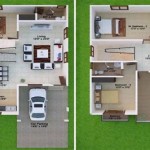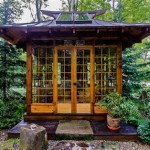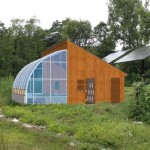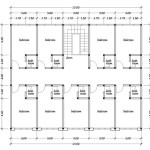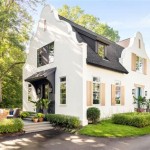East Facing House Vastu Plan 30 X 55: A Comprehensive Guide
Vastu Shastra, the ancient Indian science of architecture, provides guidelines for designing buildings in harmony with nature and cosmic energies. These principles aim to create spaces that promote health, wealth, prosperity, and overall well-being for the occupants. When planning a new house, incorporating Vastu principles is considered auspicious. This article focuses on the Vastu considerations for an east-facing house with dimensions of 30 feet by 55 feet (30 X 55).
An east-facing house is generally considered auspicious in Vastu as it allows the early morning sunlight, a source of positive energy, to enter the home. However, simply facing east is not enough; the internal layout and placement of various elements must also adhere to Vastu principles for optimal benefits. A well-designed east-facing house, according to Vastu, can bring positive energy and prosperity to the family.
This article will explore the key aspects of Vastu for an east-facing 30 X 55 house, including the placement of the main entrance, rooms, kitchen, bedrooms, and other essential areas. It will provide a comprehensive understanding of how to design the house according to Vastu principles to maximize positive energies and minimize negative influences. This includes understanding the impact of directions, elements, and the proper utilization of space.
The Importance of the Main Entrance in an East-Facing House
The main entrance, also known as the "Mukhyadwara," is the most crucial aspect of Vastu for any house, especially for an east-facing one. The placement of the main entrance significantly impacts the flow of positive energy into the house. According to Vastu, the east direction is ruled by the Sun, the giver of life and energy. Therefore, an auspiciously placed main entrance in the east can attract positive vibrations and good fortune.
For an east-facing plot, the ideal location for the main entrance is in the northeast quadrant of the eastern side. However, it is crucial to avoid the southeast corner, as it is associated with negative energy. Dividing the eastern side into nine equal parts (padas) is a common practice. According to Vastu, the 3rd, 4th, 5th and 6th padas are considered auspicious locations for the main entrance. These padas are associated with prosperity, knowledge, and overall well-being.
The main entrance should be well-lit and welcoming. Using auspicious symbols like Swastika, Om, or images of deities can further enhance the positive energy. Avoid placing any obstacles, such as trees, poles, or garbage bins, directly in front of the main entrance, as these can block the flow of positive energy. The door should open inwards and clockwise to invite positive energy into the house. Ensure that the main door is larger than the other doors in the house.
The main door should be made of good quality wood. Decorating the entrance with plants and flowers can also enhance the positive energy. Keep the entrance clean and clutter-free to allow for the smooth flow of energy. Regularly cleaning and maintaining the main entrance is essential to keep it aligned with Vastu principles. The door should be aesthetically pleasing as the first impression of the house is formed through the main entrance.
Optimal Placement of Rooms and Spaces
After the main entrance, the placement of different rooms and spaces within the house is crucial for creating a harmonious and prosperous living environment. Vastu dictates specific directions for various activities based on their associated energies. Following these guidelines can help create a balanced and supportive environment within the home.
The living room, often the first space encountered after the entrance, is ideally located in the northeast or east direction. This allows the living room to receive ample morning sunlight, creating a bright and welcoming atmosphere. Furniture should be arranged in a way that leaves the northeast corner open and uncluttered. The family room can also be placed in the north or west direction.
The kitchen, associated with the fire element, is best placed in the southeast corner of the house. This ensures that the cooking is done facing east, which is considered auspicious. Avoid placing the kitchen in the northeast corner, as this can lead to health problems and financial instability. The sink and the stove should not be placed next to each other, as they represent conflicting elements (water and fire). Storage areas for grains and other food items are best placed in the northwest direction.
Bedrooms are best located in the southwest direction for the master bedroom and northwest direction for other bedrooms. The head of the bed should be placed facing south or west. Avoid placing the bed directly in line with the door. Children's rooms can be in the west direction. Placing mirrors on the east or north walls of the bedroom is not recommended as it can reflect negative energy. The guest room can be in the northwest or north direction.
The pooja room, a space for prayer and meditation, is most auspicious in the northeast corner of the house. This direction is considered sacred and is ideal for spiritual activities. The idols should be placed facing east. The bathrooms should be located in the south or west side of the house. However, avoid placing the bathroom in the northeast corner or directly in front of the main entrance. The staircase is ideally located in the south or west part of the house.
Considerations for Open Spaces and the Impact of Directions
Open spaces and the overall orientation of the house play a significant role in determining the flow of energy within the house. Vastu emphasizes the importance of maintaining a balance between open and closed spaces to create a harmonious living environment. Moreover, understanding the influence of each direction allows for the correct placement of activities and elements within the house.
Maintain open spaces in the north and east directions of the plot. This allows for the free flow of positive energy into the house. The south and west sides should be heavier and more closed off. Avoid having high walls or tall structures blocking the sunlight from entering the house from the east. Ideally, the east and north sides should have balconies and windows to allow for ventilation and natural light.
The north direction is associated with wealth and prosperity, so keeping this area open and clutter-free is crucial. The east direction is associated with new beginnings and opportunities, making it ideal for activities that require focus and creativity. The south direction is associated with stability and relaxation, so it's ideal for bedrooms and storage areas. The west direction is associated with knowledge and learning, making it suitable for study rooms or libraries.
The northeast corner, known as the "Ishan" corner, is considered the most sacred and should be kept clean and clutter-free. The southeast corner, known as the "Agni" corner, is associated with the fire element and is ideal for the kitchen. The southwest corner, known as the "Nairutya" corner, is associated with stability and grounding, making it ideal for the master bedroom. The northwest corner, known as the "Vayavya" corner, is associated with air and movement, making it suitable for guest rooms or storerooms.
The center of the house, known as the "Brahmasthan," is considered the most sacred and powerful point in the house. It should be kept open and free from any obstructions. Avoid building any walls or placing heavy furniture in the Brahmasthan. Ideally, it should be a well-ventilated space that allows for the free flow of energy throughout the house. Maintaining the cleanliness and sanctity of the Brahmasthan is crucial for the overall well-being of the occupants.
In conclusion, designing an east-facing 30 X 55 house according to Vastu principles involves careful consideration of the main entrance, placement of rooms, open spaces, and the influence of directions. Following these guidelines can create a harmonious and prosperous living environment. Remember to consult with a Vastu expert for personalized advice based on your specific requirements and circumstances to ensure that the design aligns with the cosmic energies.

30 X 55

30x55 3 Bhk Best House Plan N Plans Design Bungalow Floor

30x55 Duplex Floor Plan Drawing Imagination Shaper

30 X 55

3bhk 30 55 East Face House Plan Map Naksha

30x55 Home Plan 1650 Sqft Design 2 Story Floor

Mr Shyam Lal Ji 30x55 Vatu House Plan With N Architect Plans 2bhk 20x40

30 55 East Face 2 Portion House Plan Map Naksha

30 X 55

3bhk 30 55 East Face House Plan Map Naksha

